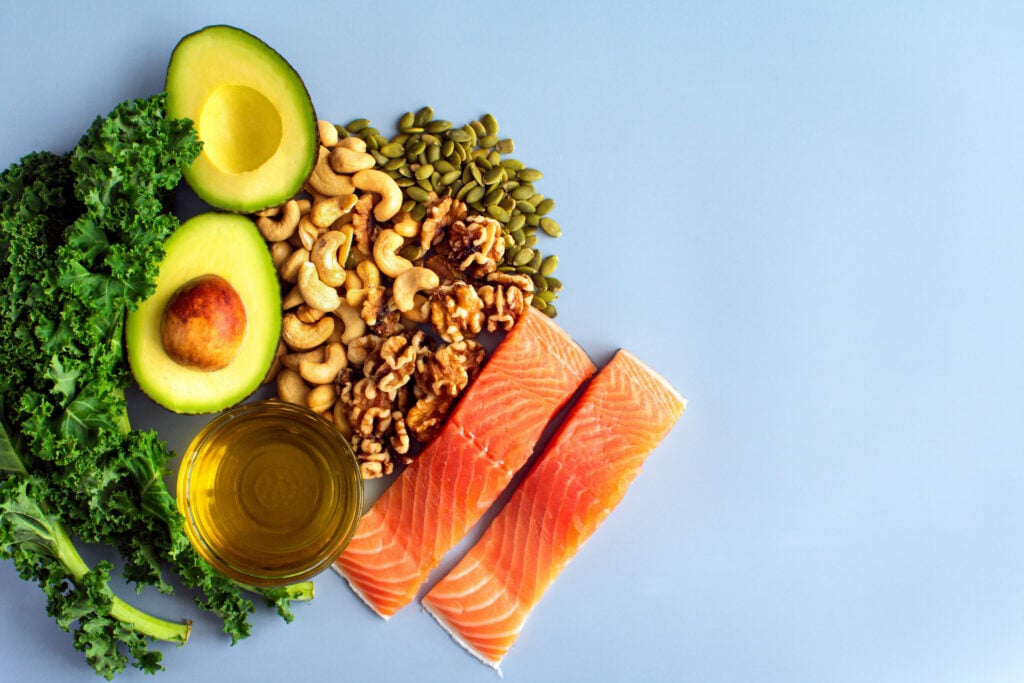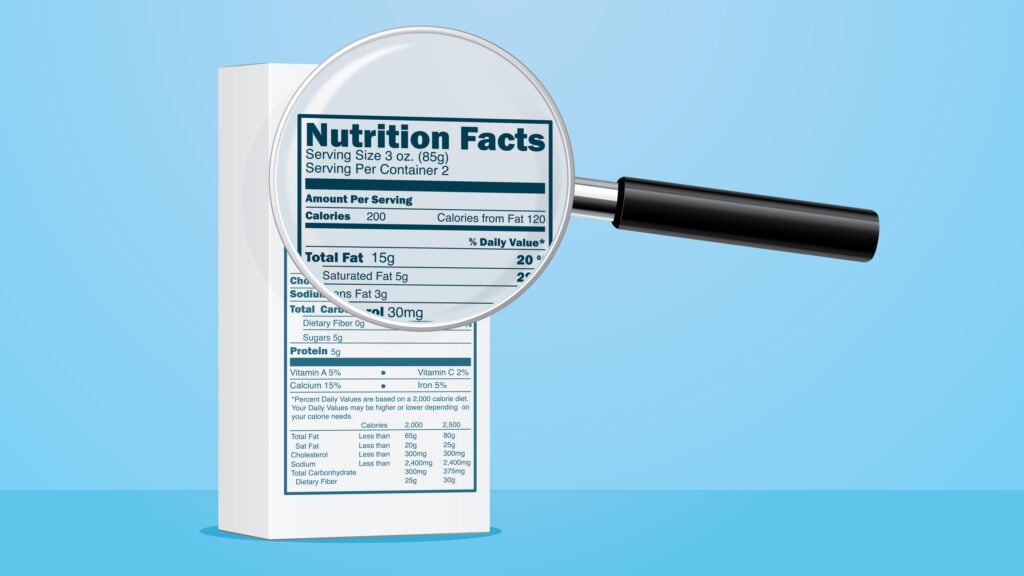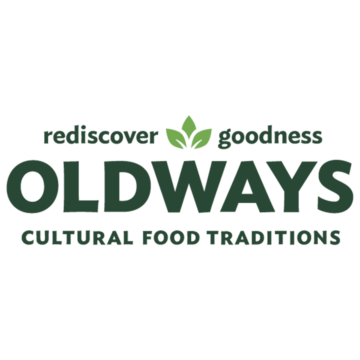The Mediterranean Diet reflects a way of eating that is traditional in countries that surround the Mediterranean, such as Greece, Italy, Spain, and Turkey. This time-honored eating pattern features plant foods like vegetables, fruits, whole grains, legumes, nuts, seeds, and olive oil at every meal, and also contains moderate amounts of seafood, and traditionally-produced cheeses and yogurts. One of the reasons that the Mediterranean diet has stood the test of time is that it is as delicious as it is nutritious, proving that good taste and good health go hand in hand. Whether you shop at your local farmers market, a big box supermarket, or a smaller convenience store, learning how to read food labels can help you embrace a Mediterranean diet anytime, anywhere.
Check the Ingredient List
When following a Mediterranean diet, the ingredient list is one of the most important parts of a food label to pay attention to. Ingredients are listed in descending order by weight, meaning that the ingredients listed first occur in larger quantities than the ingredients listed last. If a product is made mostly from foods that occur at the base of the Mediterranean Diet Pyramid, that’s a good sign! This will include things like:
Whole Grains
- Whole wheat flour
- Brown rice
- Bulgur wheat
- Quinoa
Legumes
- Lentils
- Chickpeas
- White beans
Fruit
- Raisins
- Oranges
- Figs
Olive oil
Vegetables
- Spinach
- Tomatoes
- Mushrooms
- Onions
Herbs & Spices
- Basil
- Oregano
- Cumin
- Cinnamon
- Paprika
Nuts & seeds
- Almonds
- Cashews
- Chia seeds
If a product contains mostly things that appear at the top of the Mediterranean Diet Pyramid (meats and sweets) or ingredients that don’t appear on the Pyramid at all (such as artificial colors), then it probably is not the type of food that is reflective of a true Mediterranean diet. Note that “wheat flour” and “wheat” are not necessarily whole grain and therefore not found on the Mediterranean Diet Pyramid. When it comes to whole grains, the word “whole” is a key indicator, as is the Whole Grain Stamp, which we’ll dive into shortly.

Get the Most out of the Nutrition Facts Panel
With the Mediterranean Diet Pyramid as your guide, there’s no need to eat by the numbers or bring a calculator to the table. If you focus on the foods, the nutrients will often take care of themselves. That said, there are a few places on the Nutrition Facts Panel that are helpful to check to see if a food will help keep your nutrition goals on track.
- Fat: When it comes to fat in the Mediterranean diet, quality is more important than quantity. Unsaturated fats (such as the fats found in avocado, olive oil, nuts, seeds, and canola oil) are the primary types of fat in a Mediterranean style diet. It doesn’t matter so much if a product is high or low in fat. Instead, make sure that saturated fats don’t comprise most of the total fat listed. Harvard researchers have found that replacing just 5% of calories from saturated fat with the same amount of unsaturated fat is associated with a 13-27% lower risk of death from all causes. Because a traditional Mediterranean diet includes roughly 3-4 meals or snacks daily, if any one food or meal has more than 25% or 30% of a nutrient to watch, that might be a sign to pick a food or meal that has a lower amount of that nutrient at your next eating occasion. It’s all about balance!
- Sugar: In a traditional Mediterranean diet, sweets were reserved for celebrations and special occasions, and most of the daily sweetness came from fruit. Naturally occurring sugars that are found in fruit are not a problem (these are included on the label as a part of Total Sugars), however when it comes to added sugars, less is better for health. Look for packages that have a lower number of added sugars.
- Sodium: Mediterranean cuisine relies on herbs, spices, and citrus to add big pops of flavor, rather than salt alone. Look at the amount of sodium on the Nutrition Facts Panel. Adults should limit their sodium to no more than 2,300 mg per day, or the amount of sodium in about 1 teaspoon of salt.
- Fiber: Dietary fiber is an important nutrient for keeping our digestive system on track, managing our blood sugar, and making our meals more filling. When you follow a Mediterranean diet, it’s easy to get the recommended 28 grams or more of fiber daily since Dietary fiber occurs naturally in many Mediterranean diet ingredients, such as beans, whole grains, vegetables, and fruits.

Identifying Other Package Clues
The rest of the package may also contain claims, certifications, or clues that can shed more light on the product. Look for trusted certifications such as the Whole Grain Stamp. Because the color of your bread alone and marketing phrases are not reliable indicators of whole grain content, the Whole Grain Stamp was created as a dependable resource for consumers to clearly display how many grams of whole grain are in one serving of a product.
Some packages may also have claims about Kosher certifications or allergen statements, so that people with different dietary needs can find Mediterranean diet products that work for them. If you have food allergies or specific medical conditions, your healthcare team can also help you be aware of health claims, ingredients, or nutrients to be aware of when shopping.
Reach for Fresh Foods without a Label
Many of the foods on the Mediterranean Diet Pyramid, from tomatoes to lemons to fish, are available fresh and without a label. While food labels can help us compare one product to another to find the one that better aligns with our nutrition goals, such comparisons really aren’t necessary in the produce department. Whether you’re drawn to kale or chard, or to peaches or cherries, there is no “best” fruit or vegetable. Instead, a Mediterranean diet emphasizes variety, seasonality, and adaptability – making the most of what you have.
Remember that no single product can fulfill all of your nutrient needs. If a particular food is higher or lower in a nutrient than you’d like, even the score with your next pick. The Mediterranean diet doesn’t let the perfect be the enemy of the good. It is diet over time that matters most, and every bite counts!


 Oldways
Oldways